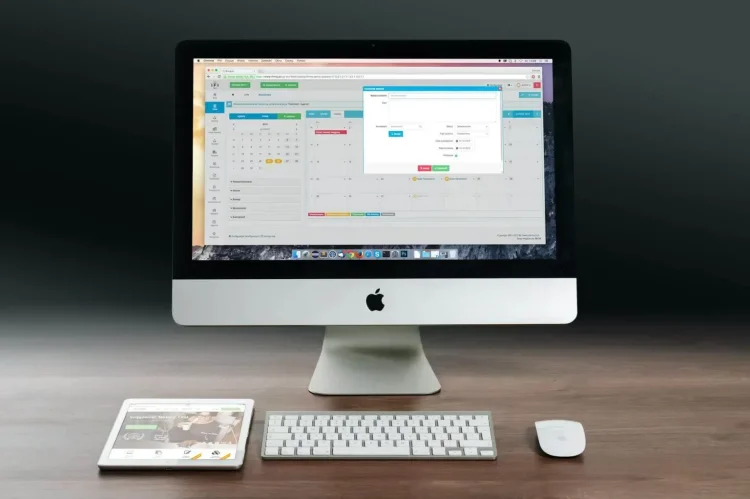Team time trackers can be a powerful productivity tool — or a source of stress and resistance among employees. Studies show that properly implemented tracking systems can increase efficiency by up to 35%, yet 77% of employees initially react negatively to time control. The key to success lies in an ethical approach and transparent communication of benefits for the entire team.
Ethical Implementation of Time Tracking in a Team
Successful adoption of time trackers begins with open dialogue. Employees need to understand that the goal is process optimization, not punishment for low productivity. This is essential for building trust.
The first step is to clearly explain the purpose of introducing the system — for example, improving project planning, ensuring fair workload distribution, or optimizing time budgeting. The team should see personal value in tracking: analyzing their own productivity, identifying peak working hours, and avoiding burnout.
It’s also important to involve employees in choosing the tool and setting up tracking rules. When people participate in designing the system, they are less likely to resist using it. Regular meetings to discuss results and adjust approaches help reduce tension and build a culture of collaboration.
Practical Examples of Integration with Task Managers
Modern team time trackers easily integrate with popular task management systems, creating a seamless workflow ecosystem. This simplifies employees’ routines and reduces resistance to new tools.
- Jira Integration: The timer starts automatically when a task moves to “In Progress” and stops when it changes to “In Review.” Developers don’t have to think about tracking — it happens naturally within the existing workflow. The system automatically categorizes time by task type: development, testing, documentation.
- Yaware.TimeTracker × Jira
- Trello Integration: Through Power-Ups, a start/stop button appears on each card, allowing teams to view total project time directly on the board — ideal for creative teams juggling multiple visual projects.
- Asana Integration: Built-in time fields or third-party apps allow managers to track project progress in real time, while employees can plan their days based on estimated task durations. Yaware.TimeTracker supports easy integration with all major task systems.
Risks of Overcontrol and How to Avoid Them
Excessive control through time trackers can turn a useful tool into a source of stress and demotivation. The main risks include loss of trust, reduced creativity, and the emergence of a fear-based culture instead of a results-oriented one.
The first danger is focusing on hours instead of outcomes. When employees feel they’re judged solely by time spent at their computers, they start pretending to be busy rather than truly productive — leading to lower results despite high logged hours.
The second issue affects creative professionals such as developers, designers, and marketers who need unstructured thinking time. Constant tracking pressure can push them to rush processes artificially, compromising work quality.
These risks can be avoided by setting goal-oriented metrics and regularly discussing results with the team. The system should emphasize project success, not mechanical time counting. Periodically revisiting rules and incorporating employee feedback also helps maintain balance.
Real Case: A Marketing Company’s Experience
A marketing agency successfully implemented time tracking after years without structured time management. The co-founder introduced the Pomodoro method — 25 minutes of focused work followed by a 5-minute break.
Initially, the team was skeptical, but management explained the tangible benefits: more accurate project planning, fair workload distribution, and optimized client billing based on real time spent.
The rollout began gradually — as an optional tool for personal time management. Employees quickly noticed that tracking helped them stay focused and avoid distractions like social media or minor tasks. It proved especially useful for large, deep-focus projects.
Results: project completion times dropped by 20%, planning accuracy improved, and client satisfaction increased due to consistent deadlines. The team began viewing the tracker as a helpful assistant, not a control mechanism.
Best Practices for Team Motivation
Effective time tracking requires a motivational approach. Employees should see how the system benefits them personally — not just the company.
Key motivational principles:
- Transparency: Employees have access to their own data and can analyze productivity trends.
- Focus on results: Evaluation is based on goal achievement, not time spent.
- Personal insights: The system provides recommendations on optimal schedules and peak productivity hours.
- Team metrics: Shared dashboards foster collaboration and collective achievement.
- Regular feedback: Discussions and adjustments based on team input improve engagement.
These principles build a partnership between management and staff, turning time tracking into a tool for self-development and optimization, not surveillance.
Technical Aspects of a Stress-Free Implementation
The technical setup of a team time tracker should be simple and intuitive. Complex systems with many manual settings cause frustration and resistance. The best solutions work “out of the box” and require minimal training.
Automatic activity detection reduces user effort — the system recognizes when someone is working with documents, software, or browsers. No need to remember to start or stop the timer manually.
Mobile apps extend tracking to business trips or remote work. Cross-device synchronization ensures data consistency, while offline mode prevents data loss during internet outages.
Privacy settings are crucial for building trust. Employees must know who can access their data and how it’s used. Allowing temporary tracker pauses for personal activities also lowers psychological stress.
Conclusions and Recommendations
A team time tracker can significantly boost productivity and improve project planning — but only if implemented ethically and thoughtfully. The keys to success are open communication, focusing on results over control, and empowering employees with tools for self-growth.
When set up correctly, a time tracker becomes a partner in achieving shared goals, not a source of stress or demotivation.
Share this article with colleagues who are planning to implement time tracking in their teams.

